Nội dung của trang này:
Nội dung của trang này:
Đánh giá
The management of heart failure should include rapid identification, stabilization of clinical and hemodynamic status together with determination, and treatment of the primary pathology, precipitating factors, and aggravating secondary causes.
Refer Patient to Cardiovascular Intensive Care Unit (ICU)
Refer the following patients to the cardiovascular intensive care unit: Those with acute heart failure and associated shock or acute coronary syndrome (patients at high risk for acute coronary syndrome may also be referred to the cardiac catheterization lab); vital signs which include SBP of <90 mmHg, heart rate of <40 beats/minute (bpm) or >130 bpm, respiratory rate of >25 breaths/minute, SpO2 <90% despite supplemental O2, or the use of accessory respiratory muscles; arrhythmias; a need for intubation or is already intubated; signs of hypoperfusion are present (eg altered mental status, cold extremities, hypotension, narrow pulse pressure, metabolic acidosis, oliguria, lactate >2 mmol/L, SvO2 <65%); poor response to non-invasive ventilation or to high fraction of inspired oxygen (FiO2) thus needing invasive ventilatory support; and those requiring ≥2 vasoactive drugs to maintain the blood pressure, for invasive cardiac output monitoring, or for mechanical circulatory support.
Management of Patients Based on Clinical Profile in the Initial Phase
- Warm-dry: Compensated patients with adequate peripheral perfusion will have adjustment of oral therapy
- Warm-wet: In patients with predominant congestive symptoms, may give a diuretic, or a vasodilator and consider ultrafiltration if resistant to diuretic therapy. If predominantly hypertensive, may give vasodilator or diuretic
- Cold-dry: May consider fluid challenge or an inotropic agent if patient is still hypoperfused and consider vasodilators if SBP ≥90 mmHg
- Cold-wet: If the SBP is <90 mmHg, an inotropic agent, or diuretic when perfusion is corrected. In refractory cases (eg hypoperfusion and congestion), consider giving a vasopressor. If unresponsive to medical therapy (eg persistent hypoperfusion or organ damage), consider mechanical circulatory support and/or renal replacement therapy. If SBP ≥90 mmHg, give vasodilators or diuretics. In refractory cases, consider giving an inotropic agent
Nguyên tắc điều trị
The goals of treatment are to treat symptoms, stabilize the patient, and improve hemodynamics, congestion and organ perfusion. Titrate the supplemental O2 to achieve SpO2 ≥95% and maintain the systolic blood pressure (SBP) >90 mmHg and peripheral perfusion. A fluid challenge with saline or Ringer’s lactate is recommended in patients with cardiogenic shock if without overt signs of fluid overload. Identify the etiology and comorbid illnesses (eg diabetes, dyslipidemia, hypertension, chronic kidney/lung disease, anemia, thyroid disease) and initiate the specific therapy. Limit organ damage (cardiac, renal, hepatic, gut) and prevent thromboembolism. Adjust the therapy to control symptoms, manage congestion and hypoperfusion, and optimize blood pressure. Initiate and assess the need to increase disease-modifying pharmacological therapy and minimize the side effects. Device therapy should be considered in appropriate patients. Create a plan of care that includes medical and device therapy and follow-up. Educate and initiate lifestyle modification and improve symptoms, quality of life, and survival. Prevention of an early readmission should be a goal. To reduce the risk of heart failure readmission or death, it is recommended that high-intensity evidence-based treatment be started early and rapidly up-titrated pre-discharge and during follow-up visits within the first 6 weeks after a heart failure hospitalization.
Pharmacological therapy
Diuretics
 Heart Failure - Acute_Management 1
Heart Failure - Acute_Management 1Example drugs: Loop diuretics, potassium-sparing diuretics, thiazide diuretics
Diuretics are the cornerstone of treatment for patients with acute heart failure that is given preferably when systolic blood pressure is ≥90 mmHg. Restore and maintain normal volume status in patients with fluid overload. The dose of intravenous (IV) diuretic should be based on the type of acute heart failure in patients with volume overload and titrated to reduce congestive symptoms. These are recommended to be given either as intermittent boluses or as continuous infusion. These provide rapid symptomatic relief in patients with pulmonary edema. Low-dose combinations of loop diuretics with thiazides or aldosterone antagonists are often more effective and have fewer side effects than high-dose monotherapy. These can be used to treat resistant edema or patients with insufficient treatment response and achieve and maintain euvolemia with the lowest effective dose. Adjust the dose after restoring the patient’s dry weight to avoid the risk of dehydration.
On admission, consider giving a higher dose of diuretic than that which the patient is currently taking unless there are contraindications. An initial intravenous dose for patients receiving chronic diuretic therapy should be at least equivalent to the oral dose. Monitor closely the vital signs, symptoms, weight, renal function and electrolytes, and urine output during diuresis. A satisfactory diuresis is a urinary sodium of ≥50-70 mEq/L after 2 hours and/or urine output of ≥100-150 mL/hr after 6 hours. If the initial diuretic response remains inadequate (ie <100 mL/hr diuresis despite doubling the dose of loop diuretic or <0.5 kg weight loss/day), consider a concomitant use of other diuretics acting at different sites (eg thiazides, Metolazone, Acetazolamide) in patients with SBP of ≥90 mmHg. Acetazolamide can increase serum chloride levels and diuresis in patients with severe heart failure at risk of diuretic resistance. Continue the oral loop diuretics at the lowest possible dose once congestion is relieved. Patients with hypotension, hyponatremia, and acidosis are unlikely to respond to diuretic treatment.
Loop Diuretics
Example drugs: Bumetanide, Furosemide, Torasemide
Loop diuretics are considered the diuretic class of choice for the treatment of heart failure. The dose given is the smallest amount that can be given for an adequate clinical response and is adjusted based on prior renal function and prior dose of diuretic agents. The initial intravenous dose of Furosemide drip should be at least equivalent to the preexisting oral dose. Higher doses of intravenous loop diuretics or the addition of another diuretic is reasonable with inadequate diuresis.
Potassium-Sparing Diuretics
Example drugs: Amiloride, Triamterene
Potassium-sparing diuretics have no direct diuretic activity. These are formulated in combination with thiazides for the treatment of hypertension. The concomitant administration of these agents can be helpful in patients with excessive potassium losses secondary to loop diuretics.
Thiazide Diuretics
Example drugs: Bendroflumethiazide, Hydrochlorothiazide, Indapamide, Metolazone
Thiazide diuretics may be effective as monotherapy in patients with heart failure with mild volume overload and preserved renal function. These are more effective as antihypertensive agents than loop diuretics.
Inotropic Agents
Example drugs: Dobutamine, Dopamine, Levosimendan, phosphodiesterase inhibitors, Norepinephrine, Epinephrine
Inotropic agents are considered in patients with advanced heart failure or low output syndrome or who are unresponsive to or intolerant of intravenous vasodilators. These are not indicated in heart failure patients with preserved systolic function presenting with hypotension. These may be considered in patients with hypotension (SBP <90 mmHg) and hypoperfusion (ie cardiogenic shock), who are unresponsive to standard treatment, including a fluid challenge, for increasing the blood pressure and cardiac output, improvement of peripheral perfusion and maintenance of end-organ function. If hypotension with subsequent hypoperfusion is deemed to be from beta-blocker therapy, consider giving Levosimendan or a phosphodiesterase inhibitor (eg Milrinone). Continuous blood pressure and cardiac rhythm monitoring are recommended because inotropes and vasopressors may induce myocardial ischemia, arrhythmia, and hypotension.
Dobutamine
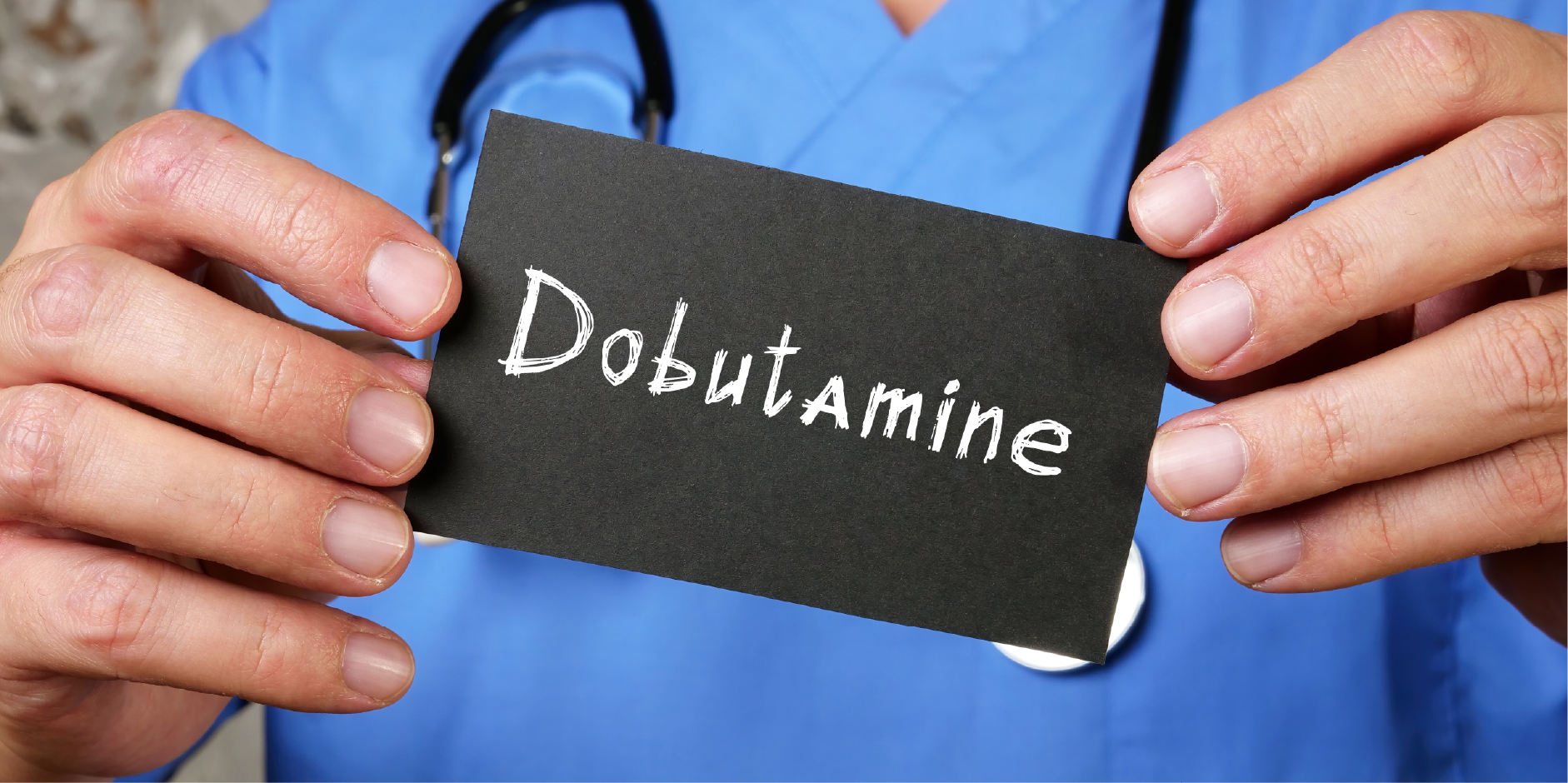 Heart Failure - Acute_Management 2
Heart Failure - Acute_Management 2Dobutamine is a positive inotropic agent that stimulates beta1 and beta2 receptors. At low doses, Dobutamine induces mild arterial vasodilatation, which augments stroke volume by decreasing afterload, while at higher doses, it causes vasoconstriction. This increases cardiac output in patients with cardiogenic shock.
Dopamine
Dopamine is an endogenous catecholamine that involves dopaminergic, beta-adrenergic, and alpha-adrenergic receptors. At low doses (<3 mcg/kg/min), Dopamine causes selective vasodilation in the renal, splanchnic, coronary, and cerebral vascular beds, causing an increased renal blood flow, with an increased response to diuretics. At intermediate doses (3-5 mcg/kg/min), it has inotropic effects, which cause an increase in myocardial contractility and cardiac output. At higher doses (>5 mcg/kg/min), it has a vasoconstrictor activity, causing an increase in peripheral vascular resistance.
Levosimendan
Levosimendan is a calcium sensitizer that improves cardiac contractility by binding to troponin-C in cardiomyocytes. This increases the cardiac output and stroke volume, decreases pulmonary wedge pressure, systemic vascular resistance, and pulmonary vascular resistance, and slightly increases heart rate and decreases blood pressure. This is an alternative for patients on beta-blockers because its inotropic effect is independent of beta-adrenergic stimulation.
Phosphodiesterase Inhibitors
Example drugs: Amrinone, Enoximone, Milrinone
Phosphodiesterase inhibitors have significant inotropic, lusitropic and peripheral vasodilating effects. These are indicated in patients with peripheral hypoperfusion with or without congestion who are resistant to diuretics and vasodilators and have preserved systemic blood pressure. These may be preferred than Dobutamine in patients on concomitant beta-blockers and/or with inadequate response to dobutamine.
Vasopressors
Example drugs: Epinephrine, Norepinephrine
Vasopressors are agents with prominent peripheral arterial vasoconstrictor activity that increases the blood pressure and redistributes cardiac output from the extremities to the vital organs. The cardiac-stimulant effect is more pronounced at low doses and the vasoconstrictor effect at high doses. These are reserved for use in emergencies to maintain end-organ perfusion in life-threatening persistent hypotension in spite of adequate filling status. These should be used with caution and only transiently because they may increase the left ventricular afterload and decrease the cardiac output, which may further decrease end-organ perfusion. If vasopressors are needed in patients with cardiogenic shock, Norepinephrine is recommended over Dopamine.
Mineralocorticoid Receptor Antagonists (MRAs)
Mineralocorticoid receptor antagonists may be initiated within 24-48 hours of hospital admission. These are given if eGFR is ≥30 mL/min/1.73 m2 and serum potassium level is <5.0 mmol/L.
Opiates
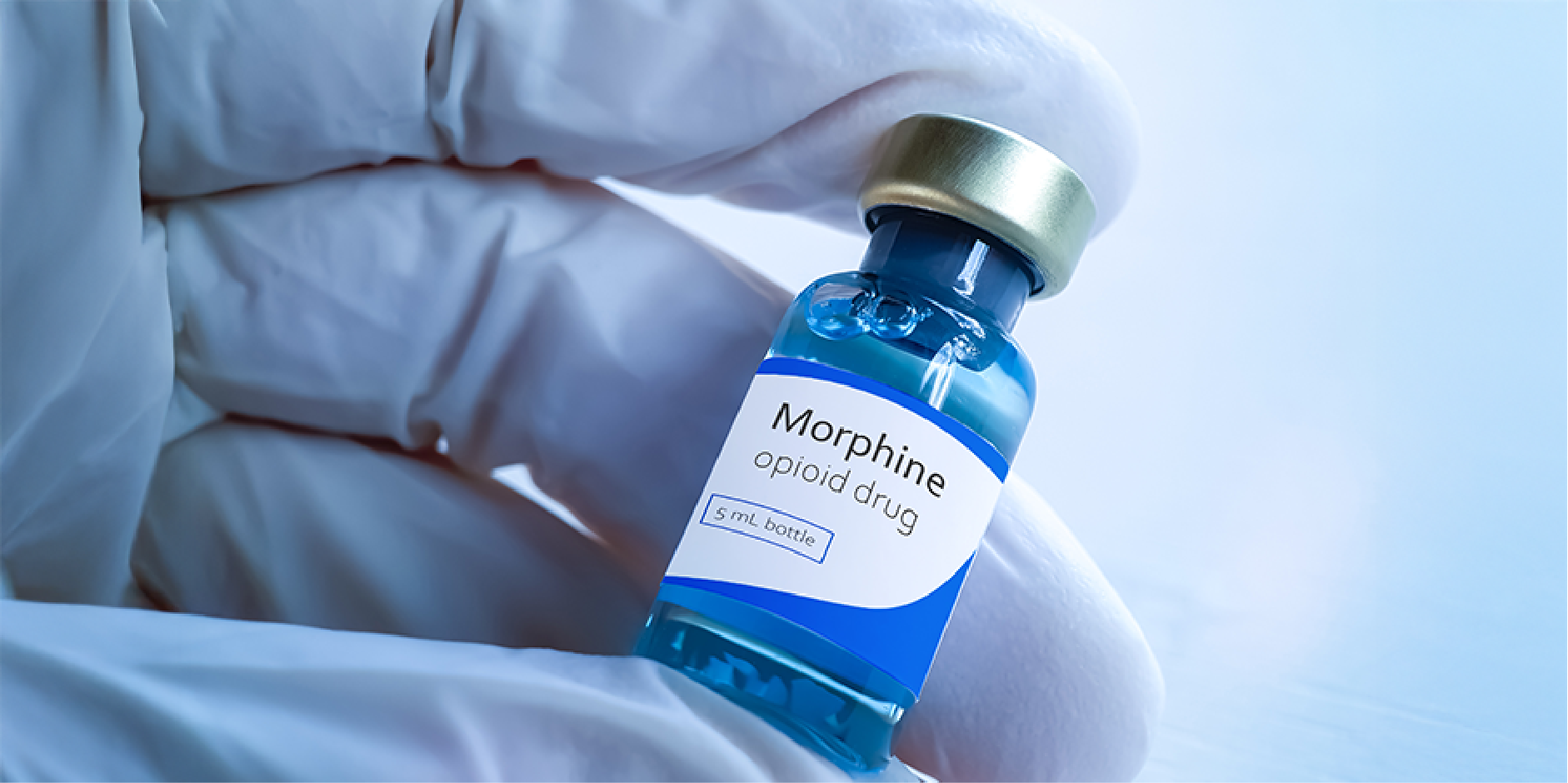 Heart Failure - Acute_Management 3
Heart Failure - Acute_Management 3Example drug: Morphine
Opiates induce mild venodilatation and mild arterial dilatation, leading to reduction in preload, heart rate, and sympathetic drive. These may be used in some patients with acute pulmonary edema to decrease anxiety and relieve distress associated with dyspnea. These should not be routinely offered to patients with acute heart failure except for those with intractable/severe pain or anxiety.
Sodium-Glucose Linked Transporter/Co-transporter 2 (SGLT2) Inhibitors
Example drugs: Dapagliflozin, Empagliflozin, Sotagliflozin
Sotagliflozin is an inhibitor of both SGLT1 and SGLT2. An early initiation of an SGLT2 inhibitor should be considered any time after hospital admission in patients with acute decompensated heart failure if without contraindications (eg hypotension [SBP <90 mm Hg], acute kidney injury or eGFR <20-25 mL/min/1.73 m2, NT-proBNP <300 pg/mL, dehydrating illness) and continuation of treatment after discharge. Augment the decongestive therapy in patients with acute heart failure; however, it is essential to carefully select and monitor patients when considering the use of these drugs.
Vasodilators
Example drugs: Nesiritide, Nitroglycerin, Nitroprusside
Vasodilators reduce venous and arterial tone, resulting in the optimization of preload and the reduction in afterload, respectively, in patients with poor perfusion and cool extremities. These are mostly used in patients with severe hypertension. An intravenous therapy may be given as initial treatment when the patient's systolic blood pressure is >100 mmHg to reduce congestion and improve symptoms; sublingual nitrates may be considered alternatives. These may be considered as an adjunct to diuretics for rapid improvement of congestive symptoms in patients with acute decompensated heart failure without systemic hypotension or significant obstructive valvular heart disease (eg mitral or aortic stenosis). Slow titration with frequent blood pressure monitoring is recommended. Reduce the dose or discontinue use if symptomatic hypotension or worsening renal function develops. The reintroduction in incremental doses can be done once symptomatic hypotension resolves.
Nesiritide
Nesiritide is a recombinant B-type natriuretic peptide developed for the treatment of acute heart failure. This causes a dose-dependent decrease in filling pressure, and systemic and pulmonary vascular resistance and an increase in cardiac output. This has been recently shown to decrease dyspnea by a small but significant amount when added to conventional therapy such as diuretics.
Nitroglycerin
Nitroglycerin lowers venous tone more than arterial tone and decreases pulmonary congestion by acutely decreasing the left ventricular filling pressure. This may enhance coronary blood flow, making it more effective in patients with acute decompensated heart failure secondary to acute ischemia or myocardial infarction, severe hypertension, or significant aortic or mitral regurgitation.
Nitroprusside
Nitroprusside is a potent vasodilator with balanced effects on the venous and arteriolar tone, ie decrease in systemic vascular resistance. This causes an immediate decrease in pulmonary capillary wedge pressure and an increase in cardiac output. This is used in patients with severe congestion and hypertension, acute aortic regurgitation, or left ventricular dysfunction complicated by mitral valve regurgitation. Nitroprusside may be used as an alternative in patients who are unresponsive to nitrates. This is used with caution in patients with renal dysfunction because of possible thiocyanate toxicity.
Vasopressin Antagonists
Example drugs: Conivaptan, Tolvaptan
Vasopressin antagonists promote aquaresis by blocking the action of arginine vasopressin at the V2 receptor in the renal tubules. These are used in treating patients with volume overload and resistant hyponatremia despite fluid restriction. These are administered to patients with fluid retention unresponsive to treatment with other diuretics, including loop diuretics (excluding those with hypernatremia).
Prophylaxis for Thromboembolism
Example drugs: Low-molecular-weight Heparin, unfractionated Heparin, Fondaparinux, direct oral anticoagulant (DOAC)
Giving prophylaxis for thromboembolism reduces the risk of developing deep venous thrombosis and pulmonary embolism in patients who are bed-bound for prolonged periods. This is recommended in patients not anticoagulated and without contraindication to anticoagulation therapy. If with contraindication, may consider using thrombo-embolic deterrent (TED) stockings or a mechanical device (eg intermittent pneumatic compression device) for venous thromboembolism prophylaxis.
Drugs After Stabilization
Oral disease-modifying therapy for acute heart failure should be initiated when the patient is hemodynamically stable, off of all intravenous inotropes, and with SBP of ≥100 mmHg. This should be continued during acute heart failure episodes except in patients who are hemodynamically unstable or with biochemical adverse reactions. Evaluate the effects of the components of long-term therapies on the renal function. Evidence-based oral medical treatment is recommended to be given prior to discharge. Based on the STRONG-HF (Safety, Tolerability, and Efficacy of Up-Titration of Guideline-Directed Medical Therapies for Acute Heart Failure) trial, it is recommended to have an intensive strategy of initiation and rapid up-titration of evidence-based oral heart failure therapies prior to discharge and during frequent follow-up visits in the first 6 weeks after an acute heart failure hospitalization to reduce the risk of heart failure readmission or all-cause death. The use of angiotensin-converting enzyme (ACE) inhibitors/angiotensin receptor blockers (ARBs)/angiotensin receptor-neprilysin inhibitor (ARNI), beta-blockers, and mineralocorticoid receptor antagonists was evaluated in hospitalized patients with heart failure, regardless of left ventricular ejection fraction (LVEF). Although STRONG-HF was based only on triple therapy with neurohormonal modulators, the recommendation also includes Empagliflozin or Dapagliflozin based on recent evidence.
Angiotensin-converting Enzyme (ACE) Inhibitors
Angiotensin-converting enzyme inhibitors are recommended for the prevention of heart failure in patients at high risk of this syndrome (eg those with peripheral vascular disease [PVD], coronary artery disease, stroke, diabetes mellitus [DM], patients with another major risk factor, or diabetes mellitus patients who smoke or have microalbuminuria). These are recommended in patients with SBP of ≥100 mmHg, left ventricular ejection fraction of ≤40%, after stabilization of acute heart failure, and to decrease the risk of premature death, recurrent myocardial infarction, and hospitalization for heart failure.
Angiotensin II Antagonists or Angiotensin Receptor Blockers (ARBs)
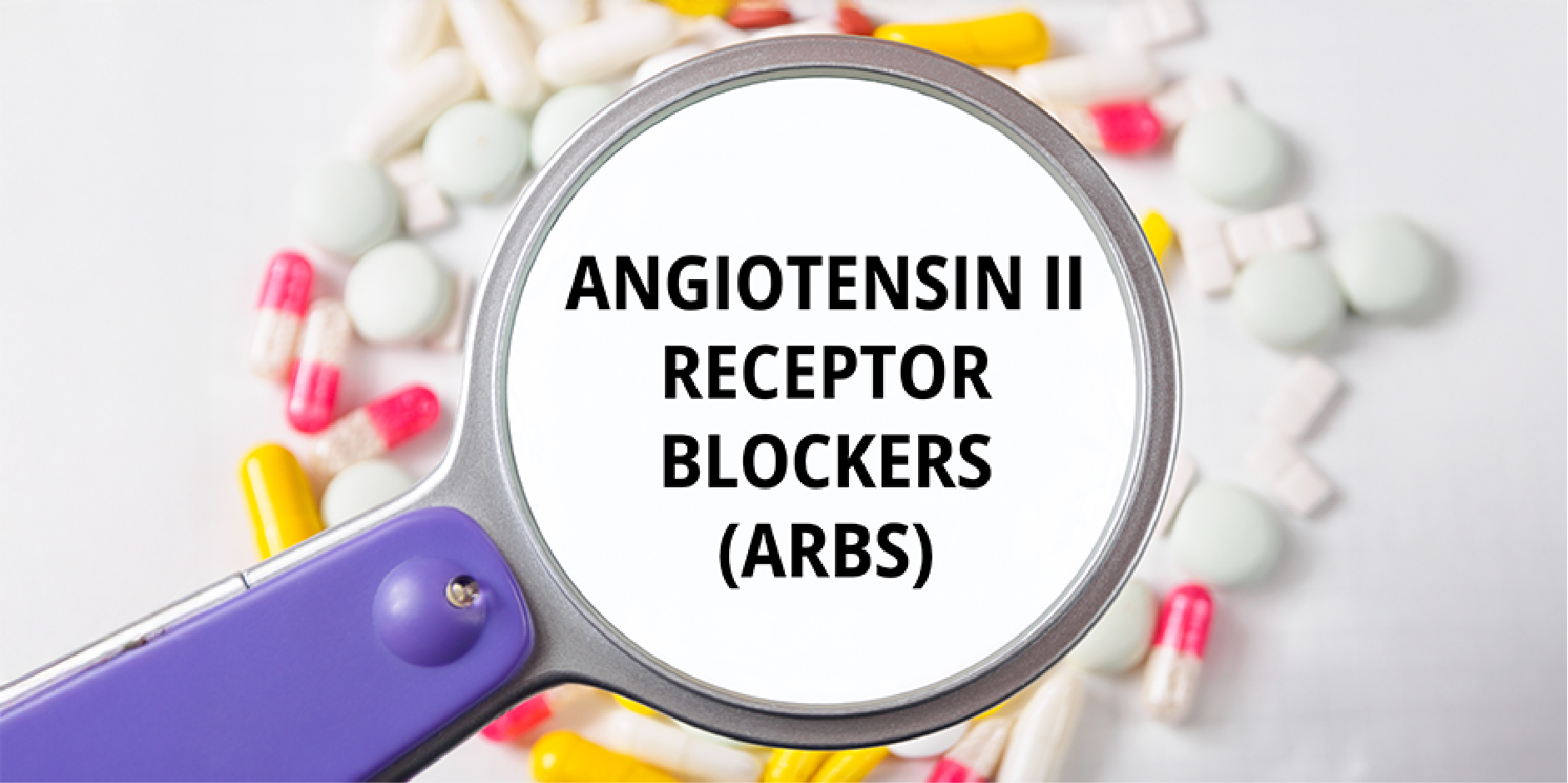 Heart Failure - Acute_Management 4
Heart Failure - Acute_Management 4Angiotensin II antagonists are alternative agents in patients with decreased left ventricular ejection fraction, symptomatic atherosclerotic cardiovascular disease, or diabetes mellitus and another risk factor who cannot tolerate the side effects of angiotensin-converting enzyme inhibitors. These also reduce the risk of premature death, recurrent myocardial infarction, and hospitalization for heart failure.
Angiotensin Receptor-Neprilysin Inhibitor (ARNI)
Angiotensin receptor-neprilysin inhibitor may be initiated as first-line therapy in patients with acute heart failure and SBP of ≥100 mmHg in lieu of angiotensin-converting enzyme inhibitors or angiotensin receptor blockers. Substituting angiotensin receptor-neprilysin inhibitor for angiotensin-converting enzyme inhibitors or angiotensin II antagonists during the hospital admission can be considered if the patient is already on the latter drugs and is admitted with decompensation. This should be used with caution if the eGFR is <30 mL/min/1.73 m2 and should be avoided in patients with end-stage renal disease.
Beta-Blockers
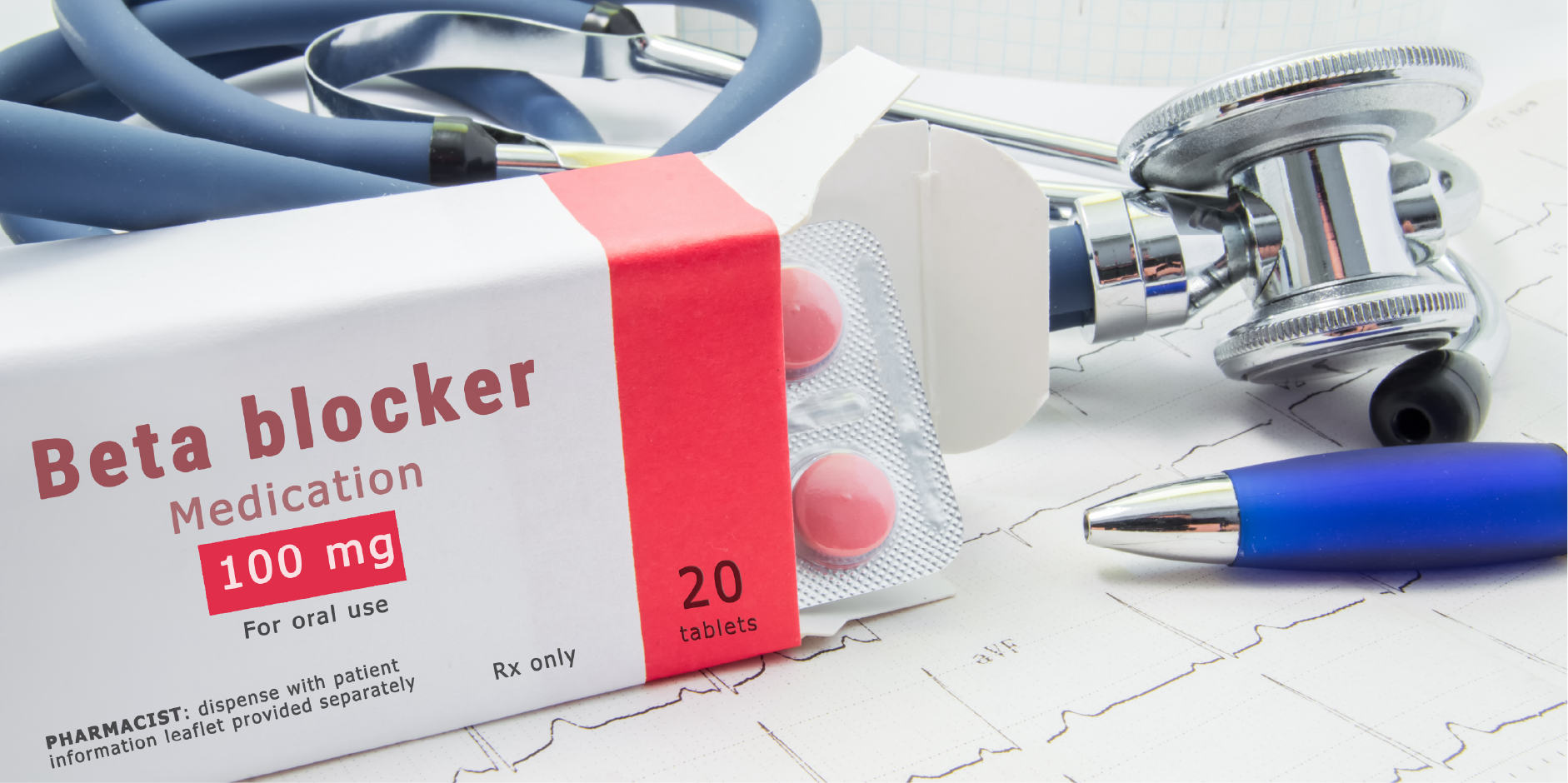 Heart Failure - Acute_Management 5
Heart Failure - Acute_Management 5Beta-blockers are recommended in patients with SBP of ≥100 mmHg and recent decompensation of heart failure after optimization of volume status and discontinuation of intravenous diuretics, vasoactive agents and inotropes. These should be given in a "start low, go slow" approach until maximum tolerable doses and the patient's clinical status, blood pressure, and heart rate are reassessed after each dose titration. These are used in patients with symptomatic heart failure, left ventricular ejection fraction <40% or left ventricular systolic dysfunction after myocardial infarction and patients with atrial fibrillation for acute control of ventricular rate. This should be used cautiously if the patient is hypotensive. Digoxin should be considered in patients with atrial fibrillation with rapid ventricular rate despite beta-blocker therapy. These decrease cardiac ischemia, reinfarction, and myocardial remodeling after acute myocardial infarction. These should be and can be safely continued in patients with acute heart failure except in cardiogenic shock. Beta-blockers should be discontinued in patients taking these medications if they have a heart rate of <50 bpm, 2nd- or 3rd-degree AV block, or shock.
Cardiac Glycosides
A positive inotropic effect of cardiac glycosides does not change in heart failure. These produce a small increase in the cardiac output and reduction of the filling pressures. These are indicated in patients with acute heart failure secondary to atrial fibrillation with insufficient rate control. These may be used in patients with sinus rhythm with symptomatic heart failure and left ventricular ejection fraction ≤40%.
Diuretics
Oral diuretics may be started once congestion is relieved and the patient's dry weight is achieved. Bumetanide may be considered in patients suspected to have diuretic resistance. The dose should be individualized at discharge. There may be a need to reduce the diuretic dose on initiation of mineralocorticoid receptor antagonist and SGLT2 inhibitor therapy.
Mineralocorticoid Receptor Antagonists (MRAs) or Aldosterone Antagonists
Aldosterone antagonists may be given after stabilization since they have minimal effect on blood pressure in patients with eGFR ≥30 mL/min/1.73 m2. These are recommended in patients following an acute myocardial infarction, with clinical heart failure manifestations or a history of diabetes mellitus and left ventricular ejection fraction <40%, while receiving standard therapy. These are offered as an alternative if an angiotensin-converting enzyme inhibitor or angiotensin II antagonist is not tolerated.
Sodium-Glucose Co-transporter 2 (SGLT2) Inhibitors
Sodium-glucose co-transporter 2 (SGLT2) inhibitors should be initiated if the patient's SBP is >100 mmHg, there is no increase in the intravenous diuretic dose and the patient has been off all intravenous vasodilators (including nitrates) within the past 6 hours, and has not been on inotropic agents for the past 24 hours. These should only be initiated if eGFR is ≥20 mL/min/1.73 m2. This should be used with caution when started concurrently with an angiotensin-converting enzyme inhibitor, angiotensin II antagonist, or angiotensin receptor-neprilysin inhibitor.
Nonpharmacological
Elevate
the back rest to a position of comfort and limit total fluid intake to
<1-1.5 L/day including patients with hyponatremia. Restrict sodium to <2
g/day in patients with symptomatic heart failure, but avoid extreme sodium
restriction to <1 g/day.
Ventilation
Oxygen
Oxygen
should be given to treat hypoxemic patients (SpO2 <90% or PaO2
<60 mmHg) in order to maintain O2 saturation at ≥95% (≥90% in
patients with chronic obstructive pulmonary disease). This should not be used
routinely in non-hypoxemic patients because it causes vasoconstriction and
decreases cardiac output.
Non-invasive
Ventilation (NIV)
Continuous
positive airway pressure (CPAP), bilevel positive airway pressure (BIPAP) and
non-invasive positive pressure ventilation (NIPPV) relieve dyspnea and improve
O2 saturation in patients with acute pulmonary edema. Studies show
that the high-flow nasal cannula is non-inferior to NIPPV and more effective
than conventional O2 therapy using nasal prongs or a mask. This is
an adjunctive therapy to relieve symptoms in patients with pulmonary edema and
severe respiratory distress who are not responsive to O2 or
pharmacological therapy. This is considered in patients with conditions
complicated by respiratory failure, decreased consciousness, or physical
exhaustion. This is initiated as soon as possible to reduce respiratory
distress and decrease the rate of endotracheal intubation. This should be used with
caution in hypotensive patients and those with reduced preload reserve. This is
contraindicated in patients with vomiting, possible pneumothorax, and altered
sensorium.
Endotracheal
Intubation and Invasive Ventilation
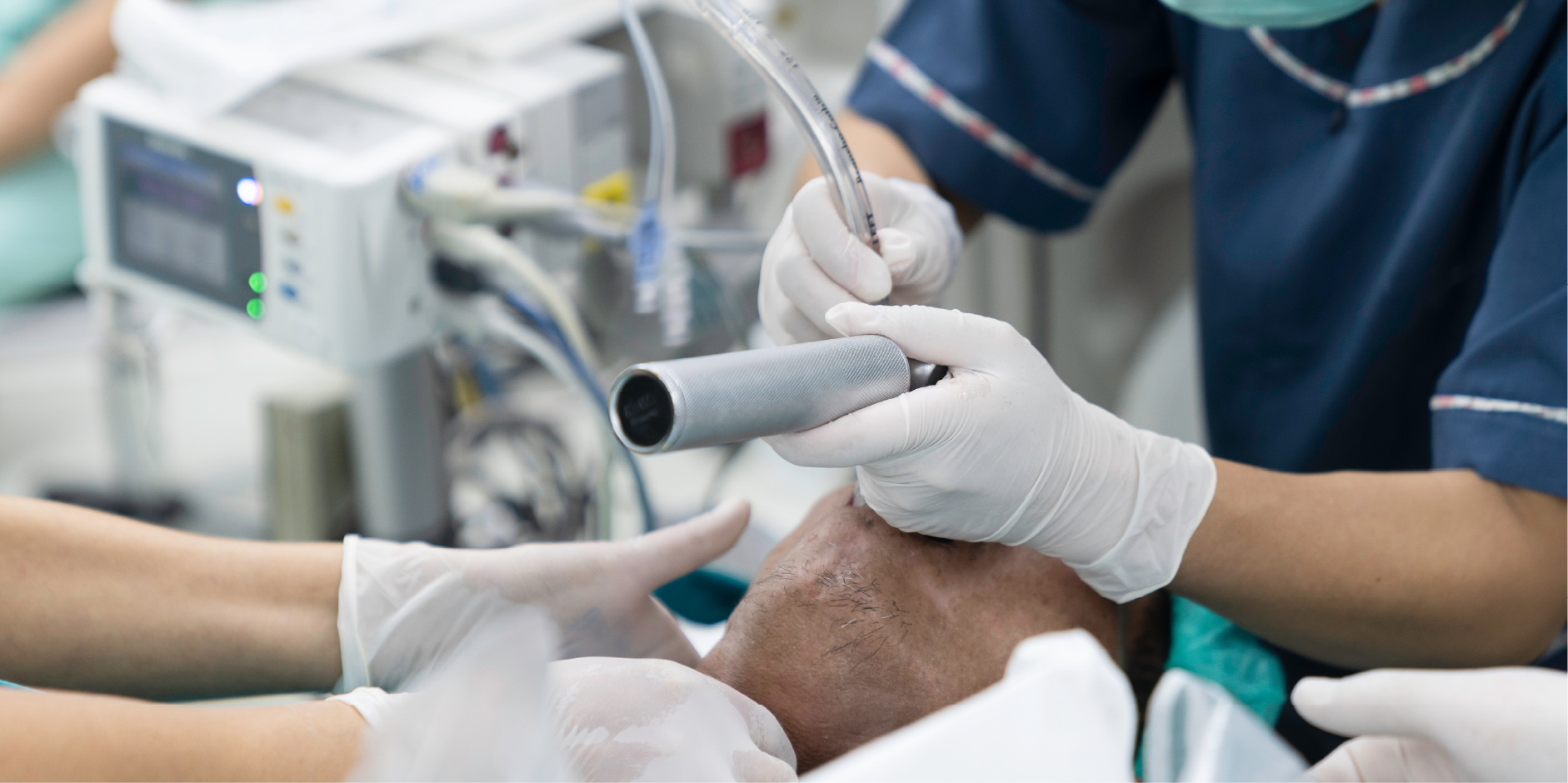 Heart Failure - Acute_Management 6
Heart Failure - Acute_Management 6Endotracheal intubation and invasive ventilation are indicated in patients with progressive respiratory failure, which may lead to hypoxemia, hypercapnia, and acidosis, that cannot be managed through non-invasive measures, or who are intolerant of or have contraindications to NIV. These are also considered in patients with physical exhaustion, respiratory muscle fatigue, decreased consciousness, inability to maintain the airway, and persistent hemodynamic instability.
INTERVENTIONAL THERAPY
Mechanical Assist Devices
Temporary mechanical circulatory assistance may be indicated in patients with acute heart failure who have potential for myocardial recovery but are unresponsive to conventional treatment. Mechanical circulatory support used in the short term may be considered in patients with refractory cardiogenic shock depending on the patient’s age, presence of comorbidities, and neurological function. These can also be used as a bridge to heart transplantation that may lead to significant recovery of the heart function (bridge to recovery, bridge to decision, or bridge to bridge).
Intra-aortic Balloon Pump (IABP) Counterpulsation
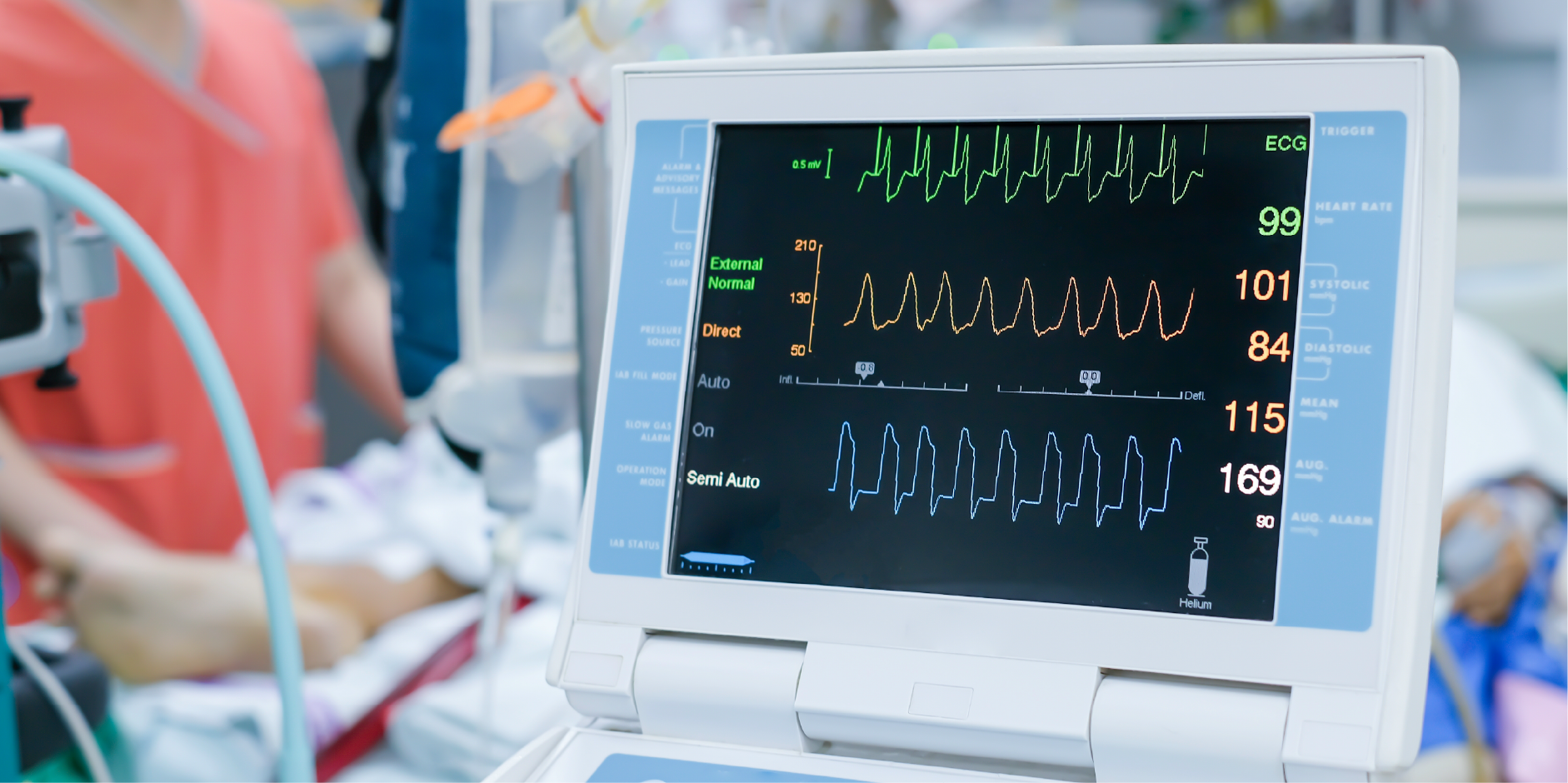 Heart Failure - Acute_Management 7
Heart Failure - Acute_Management 7Intra-aortic balloon pump (IABP) counterpulsation is a standard component of therapy in cardiogenic shock or severe acute left heart failure in patients who do not respond rapidly to fluid administration, vasodilatation, and inotropic support; are complicated by significant mitral regurgitation or rupture of the interventricular septum; and have severe myocardial ischemia in preparation for coronary angiography and revascularization. This is indicated as a bridge until myocardial recovery or heart transplant. This should only be used in patients who may recover spontaneously or whose underlying condition may be corrected by coronary revascularization, valve replacement, or heart transplant. This is contraindicated in patients with aortic dissection, significant aortic insufficiency, severe peripheral vascular disease, uncorrectable causes of heart failure, or multi-organ failure.
Ventricular Assist Devices
Ventricular assist devices are mechanical pumps that partially replace the mechanical work of the ventricle. These decrease myocardial work and pump blood into the arterial system, thus increasing peripheral and end-organ flow. These are considered in patients with >2 months of severe symptoms despite optimal medical and device treatment who have >1 of the following conditions (either as a destination therapy or a bridge to myocardial recovery or cardiac transplantation): Left ventricular ejection fraction <25% and peak maximum O2 consumption <12 mL/kg/min; three or more heart failure hospitalizations in the last 12 months with no known precipitating cause; dependence on intravenous inotropes; progressive end-organ dysfunction from reduced perfusion; and without deteriorating right ventricular function. The complications include thromboembolism, bleeding, infection, and device malfunction.
Ultrafiltration
Ultrafiltration is one of the most common approaches of renal replacement therapies. This is used to remove fluid in patients with heart failure who are not responsive to diuretics.
Coronary Revascularization
Coronary revascularization can be considered in patients with heart failure and suitable coronary anatomy for relief of refractory angina or acute coronary syndrome. Following revascularization, stable patients may be referred for cardiac rehabilitation. Meta-analyses demonstrate that cardiac rehabilitation improves functional capacity, exercise duration, and health-related quality of life and decreases hospitalizations and mortality in patients with heart failure.
Phẫu thuật
Valvular Surgery
Valvular surgery may be indicated in patients with valvular heart disease as the etiology of heart failure or as an important aggravating factor for heart failure. Surgical or percutaneous intervention may be performed after stabilization and optimal medical management of heart failure and comorbid conditions. Emergency surgery should be avoided if possible.
